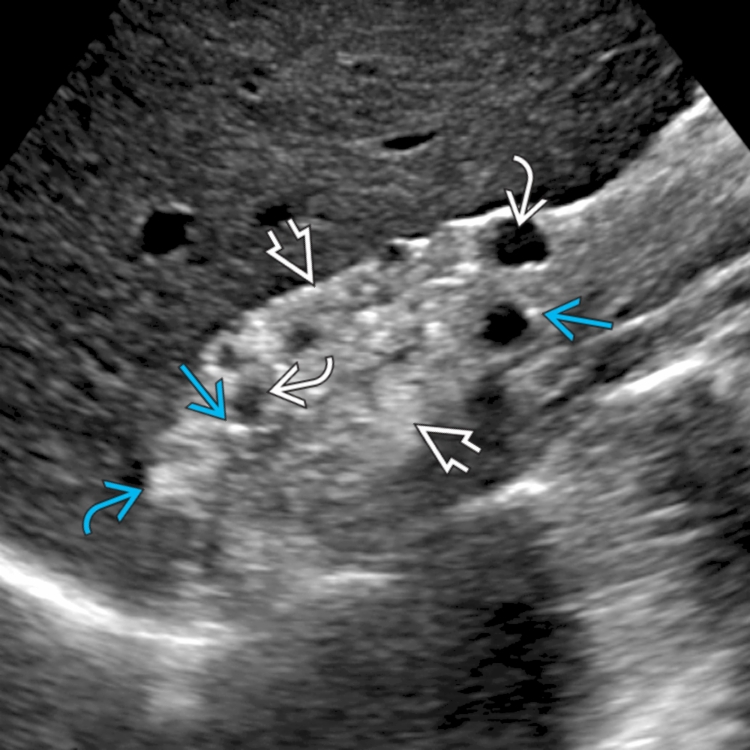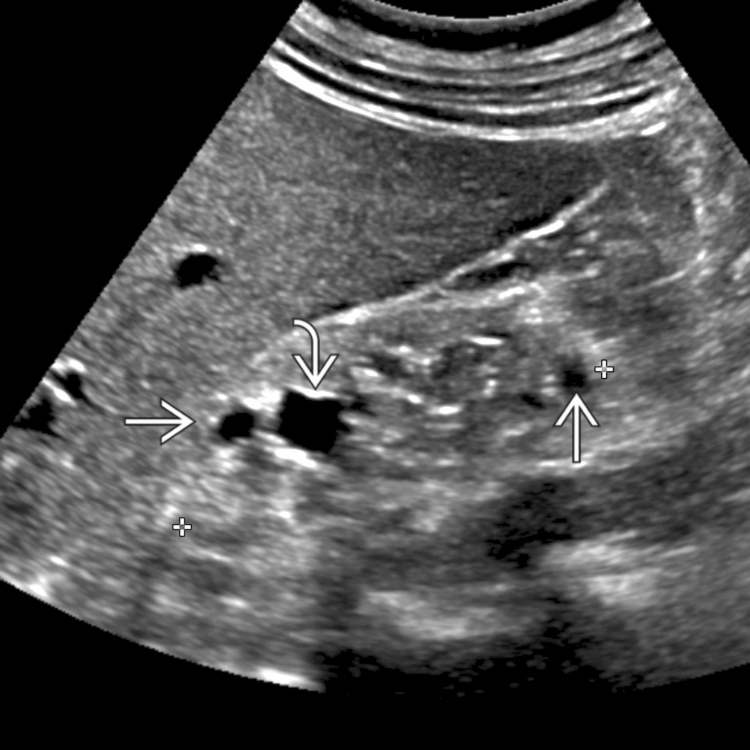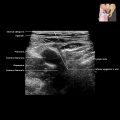KEY FACTS
Terminology
- •
Presence of 3 or more renal cysts per kidney in patients with chronic kidney disease (CKD) who do not have hereditary cystic disease
- •
Occurs predominantly in patients on long-term dialysis (peritoneal or hemodialysis)
- •
In up to 13% of patients with CKD prior to dialysis
Imaging
- •
Ultrasound: Study of choice for establishing diagnosis in patients on dialysis
- •
Multiple bilateral small cysts in normal-sized or atrophic, echogenic kidneys
- ○
Cysts are usually simple; may be complicated by hemorrhage, leading to internal fluid, solid avascular debris and septa
- ○
Hemorrhagic cysts
- ○
Malignant transformation of cysts typically manifests as papillary growth within the cyst
- ○
- •
Cysts scattered in both renal cortex and medulla
- •
Kidneys may be enlarged due to cysts
- •
CEUS, CT, or MR are required to fully evaluate complex cysts and distinguish from renal cell carcinoma
Top Differential Diagnoses
- •
Multiple simple cysts
- •
Adult polycystic kidney disease
- •
von Hippel-Lindau disease
- •
Tuberous sclerosis
- •
Medullary cystic disease
Clinical Issues
- •
Most patients are asymptomatic
- •
Hematuria, flank pain, fever if complications such as hemorrhage or infection occur
- •
Renal cell carcinoma occurs in up to 7% of patients
Scanning Tips
- •
Look for solid components
 with multiple small cortical and medullary cysts
with multiple small cortical and medullary cysts  . Many of these contain peripheral calcifications
. Many of these contain peripheral calcifications  , more common in ACKD than in age-related simple renal cysts. One of these is entirely calcified
, more common in ACKD than in age-related simple renal cysts. One of these is entirely calcified  .
.
 and medullary
and medullary  cysts in a patient with chronic kidney disease, not yet on dialysis. The kidney is hyperechoic.
cysts in a patient with chronic kidney disease, not yet on dialysis. The kidney is hyperechoic.
 within an echogenic right kidney
within an echogenic right kidney  . There is cortical atrophy. The inferior cyst has internal echoes
. There is cortical atrophy. The inferior cyst has internal echoes  and lack of color flow, consistent with a hemorrhagic cyst, common in patients with cystic kidney disease of dialysis.
and lack of color flow, consistent with a hemorrhagic cyst, common in patients with cystic kidney disease of dialysis.
Stay updated, free articles. Join our Telegram channel

Full access? Get Clinical Tree








